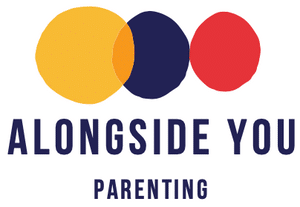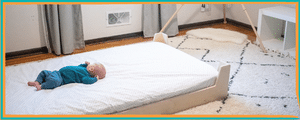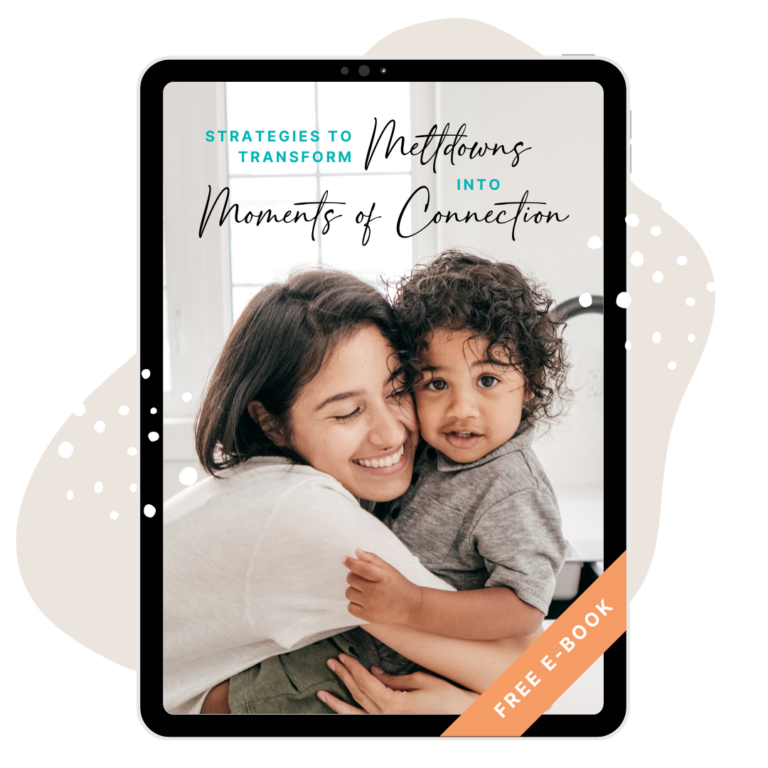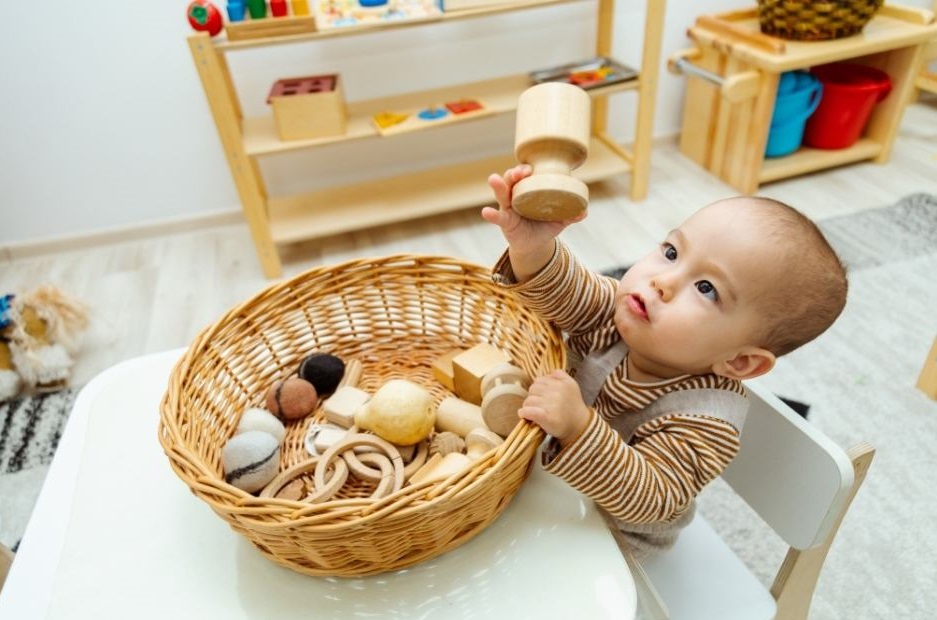Sometimes referred to as a ‘Montessori Bed’, the concept of a floor bed or low bed is not new. It has been a common way of sleeping for many cultures for hundreds of years. But for many parents moving their baby out of a cot onto the floor seems like a wild and crazy idea.
There are many benefits to a floor bed, however it is not without its challenges. In this article I will explain the benefits of using a floor/low bed, common concerns, how to set up a sleeping space using a floor bed and how to make the transition from cot to floor/low bed.
Why Use a Floor Bed / Low Bed
- Freedom of Movement. A child on a floor bed can get in and out of their bed on their own as soon as they can slither, reducing their dependence on adults. On a floor bed children will also have full range of sight, rather than an obstructed view behind cot bars.
- Promotes a Sense of Independence. Children are able to get into and out of their bed without their parent’s permission or help. They can explore their space freely and independently.
- Empowers the Child and Encourages Decision Making. Children are able to make the decision to leave their bed on their own. Although this may sound a bit scary, we need to trust our children. We are helping them learn how to make their own decisions based on their own needs, not our needs.
- Respect. By not confining our children to a cot we are showing them that we respect their needs and their capabilities.
Discover practical, easy-to-implement strategies to gently navigate your child’s emotional outbursts, while maintaining your own sense of calm.
Other Benefits
- Cots can be difficult. Settling and transferring babies into a cot can be difficult. It is normal for children under three to still need help to fall asleep or re-settle in the night. Laying down next to your child will be more comforting for them and easier for you as well. A floor bed means you can settle your child where you want them to sleep.
- Sense of Order. A child under three has a strong sense of order. It can be unsettling to fall asleep in one place and wake up in another. Providing one sleeping space and being consistent will help your child’s sense of order.
- Night Wakings. Night wakings are normal and a floor bed means you can respond to your child in their sleep environment. You can even co-sleep with them in their bed, and the other parent can continue sleeping in the parent bed – everyone can get some sleep.
- Transitions. If you are working on transitioning your child to their own bed or room, a floor bed can help as you can start bedtime with them and gradually retreat out of the room when they are asleep.
- Climbers. If your child likes to climb then a cot can be a stimulating place for them as they figure out how to climb or practice climbing instead of staying in their cot or going to sleep. A floor bed removes the temptation to climb.
- Movers. If your child is in a developmental phase of moving around (rolling, sitting up, pulling up) they will want to practice these new skills all the time. Maria Montessori called these phases ‘sensitive periods’. Being contained in a cot will frustrate your child. During these times they need as much freedom of movement as possible. The floor bed provides them with that, as well it is safer for them to practice in a space where they won’t fall back or bang onto the rails.
- Going to Bed Themselves. If children have access to their bed they can go to bed wherever they feel tired. They don’t need a parent to wait for their cues or lift them into their cot. They are given the opportunity to listen to themselves and help themselves.
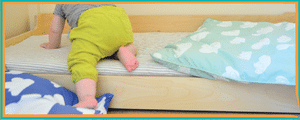
Common Concerns
- My child will roll off. Yes, they might and this isn’t necessarily a bad thing. Actually, it means that your child is experiencing freedom of movement, gaining knowledge about how their body moves in space, developing a sense of ‘the edge’ and what it feels like to be near the edge, move off the edge and how to move back from the edge. These are skills that your child will need to develop sooner or later. The floor bed is only a few centimetres off the floor, if they fall off the bed they will only slip off a few centimetres.
- My child won’t stay on their bed. They might not and again, this isn’t necessarily a bad thing. Young children can be very active while asleep. While this is frustrating to adults we need to remember the purpose of the floor bed – to encourage independence. Sleep is one thing that parents cannot control for their child. Parents need to learn to trust. Sometimes that means the child will fall asleep on the floor, half on the bed, half on the floor and sometimes they may move back to their bed in the night – all by themselves!
- They will leave their room. Possibly, if they wake up in the night and need you, they may leave their room. It’s important that the area is safe and they are able to get to you safely. By independently finding you they are building their self-confidence and also developing self-regulation. As parents you are showing them that you trust them to know when they can leave their room.
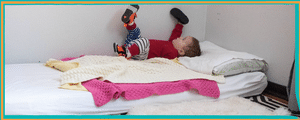
How to Set Up a Floor Bed
- Safety First. Your child’s room must be 100% safe. Furniture needs to be secured to the walls, cords can not be dangling or accessible, plugs must be covered. Get down on all floors and explore their room from their level.
- SIDS. Always refer and follow the SIDS Safe Sleeping Guidelines.
- Embrace Minimalism. Although adults love to create the ‘perfect’ nursery or room for their child we must remember that the room is intended for sleep, not for play. Remove anything that could be overly stimulating. Only have a few toys and books in the room that are safe for the child to use on their own.
- A Mattress is Enough. Simply put, a floor bed is a mattress on the floor. Although there are many beautiful options now available, a mattress firm enough for the child to sleep on is all that is required. The size of the mattress can vary depending on the space and what is available. A wooden frame is optional. The main requirement is that your child can get on and off the bed themselves. If you are concerned about your child falling off the mattress you can place a soft carpet or mat on the floor alongside the bed.
- Sleeping Bags/Sacks. Your child must have freedom of movement so sleeping bags or any bed clothes that restrict their movement is not recommended. If you are worried about them getting cold in the night, dress them in layers, socks and slippers included, or look for a sleeping suit that has separated legs.

When and How to Transition to a Floor Bed
- At the start. For the first few months your baby will most likely sleep in a bassinet, co-sleeper, or sidecar in their parent’s room. SIDS guidelines recommend that a baby sleeps in the same room as their parent for the first 6-12 months. When your child is ready to move out of the bassinet you can move them right onto the floor bed.
- Each family is different. Do what feels right for you and your child. Don’t worry if you don’t make this early transition. Although it can be easier to transition before your child starts moving, transitioning to a floor bed can be done at any time.
- If your child has already started rolling/moving. Start with day time sleeps and gradually move towards night time sleeps. Normally there is one sleep during the day that is easier or more guaranteed to happen, start with this sleep on the floor bed. After a few days you can try the night time sleep on the floor bed. Use the same nap/bedtime routine you always have done, keeping everything the same and consistent, the only change will be the floor bed.
- Always remember to communicate with your child. Explain the process and make your expectations clear. This is new for them as well. Learning new things takes time. When a child is given freedom they will always use it to further their development. Consistency and realistic expectations are key. You may need to redirect your child back to bed many times each evening and this can be frustrating, but the long term benefits of using a floor bed outweigh the short term frustrations.
A floor bed may not work for every family, that doesn’t make your family any less ‘Montessori’, what is most important is that you do what feels right for you, your child and your family.

A big special thanks to Melissa Chandler from Alongside You Parenting for this incredible article! For more information on what she does head to Alongside You Parenting on Facebook or have a look at www.alongsideyouparenting.com
